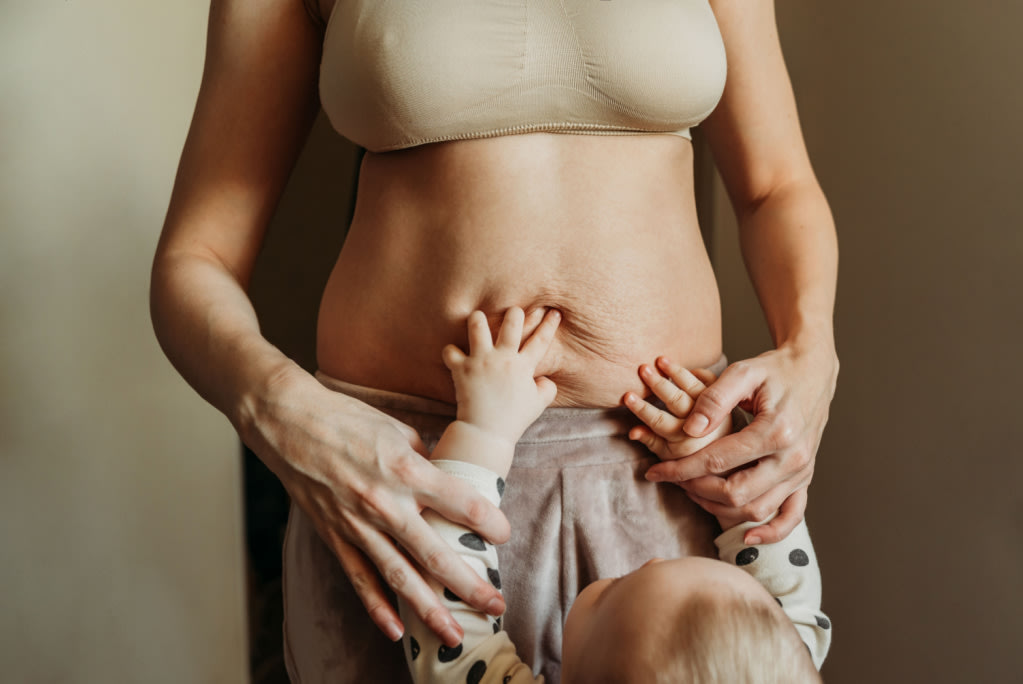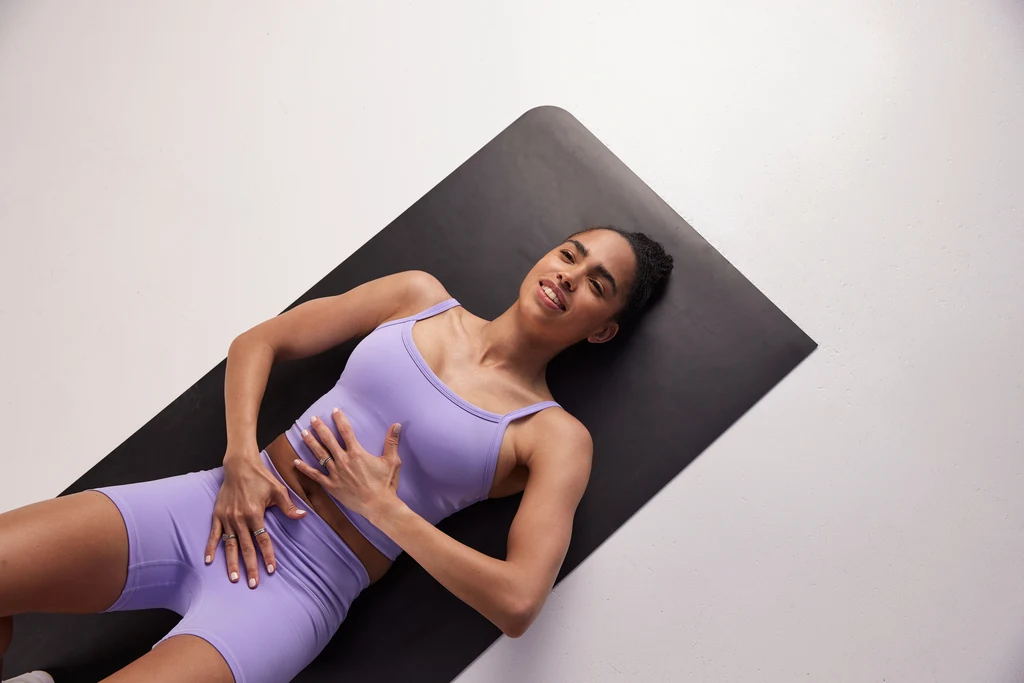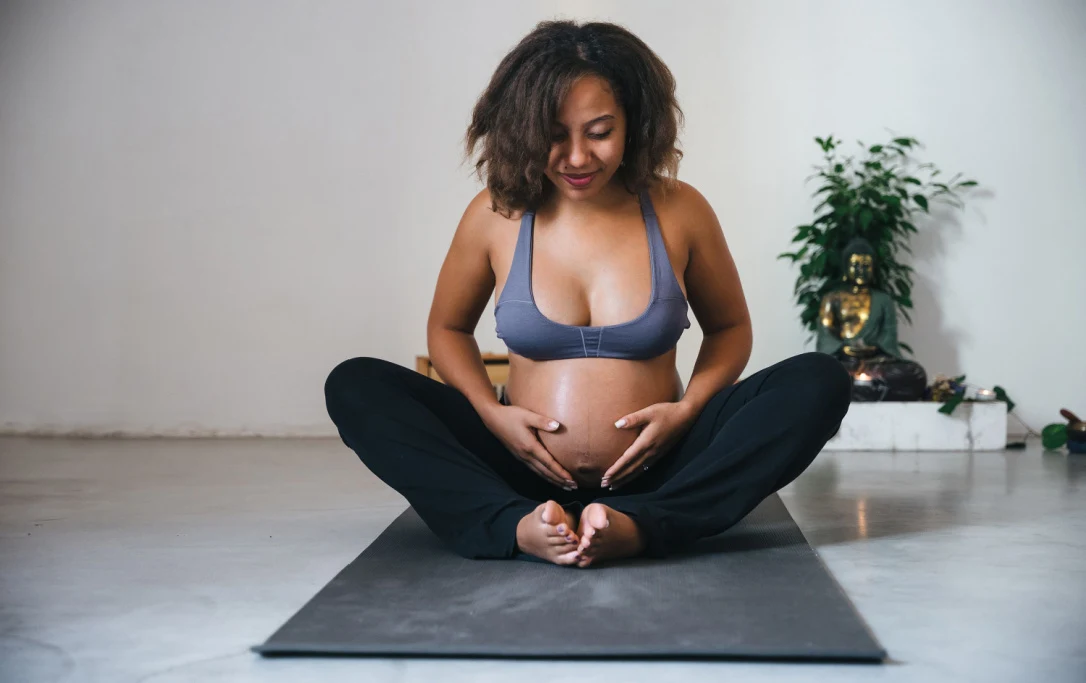Can Exercise Help With Diastasis Recti?
It impacts approximately 60% of pregnancies and can take months to resolve. So what does diastasis recti (aka abdominal separation) mean for your workouts?

January 3, 2023 - Updated June 12, 2024

If you’ve ever been pregnant, the phrase “diastasis recti” or “recti divarication” is probably already in your vocabulary. The term refers to a common condition where the large abdominal muscles separate during pregnancy.
According to Pregnancy, Birth & Baby, an Australian-government-funded organisation, some women experience weakening and separating abdominal muscles during and after their pregnancies. This typically occurs in the second half of pregnancy when the growing uterus causes the stomach muscles to separate from one another.
Cleveland Clinic estimates diastasis recti impacts 60% of pregnant women, and while it usually resolves within eight weeks of delivery, 40% of these women will still have the condition at six months postpartum.
“I started developing diastasis recti in my third trimester,” shares Sweat trainer Britany Williams. “This is commonly when women start to develop diastasis recti but it still was hard for me to hear. Even as a pre and postnatal certified trainer who knows how normal and common diastasis recti is, it still was hard to know it was happening. I had spent my pregnancy modifying exercises probably more than I needed to out of fear of diastasis recti, and yet here I was - human!”
While any pregnant woman might experience this condition, it tends to occur more commonly in women who have had more than one child, are over the age of 35, are pregnant with multiple children, deliver vaginally or in smaller women expecting a larger-than-average baby.
If you have had abdominal separation, you will need to plan your return to fitness with your healthcare provider accordingly.

How do you know if you have diastasis recti?
As with all medical conditions, your healthcare provider is best placed to discuss your symptoms and is the only one who can provide you with an official diagnosis.
According to Pregnancy, Birth & Baby, your GP, midwife or physiotherapist can check how big the separation is during an ultrasound or by measuring it using their fingers or a measuring tape. You can also check for it yourself! If you’re unsure what to look for, Britany has included a video guide to checking for diastasis recti in week one of her Post-Pregnancy Core & Restore program.
While diastasis recti occurs during pregnancy, Cleveland Clinic highlights that a lot of women won’t realise they have the condition until after they give birth. This is because the abdomen stretches naturally during pregnancy.
Cleveland Clinic points to the following symptoms experienced during the postpartum period as signs you might have diastasis recti:
A visible bulge just above or below the belly button
A jelly-like feeling around the belly button
A coning or doming sensation when you contract your abdominal muscles
A weak feeling in the abdominal muscles
Constipation
Difficulty with everyday tasks, lifting objects and/or walking
Pain during sex
Pain in the lower back, pelvis or hips
Poor posture
Urine leaking when you sneeze or cough

Does diastasis recti go away?
For most women, diastasis recti will resolve itself post-birth. However, one in three women still report problems up to 12 months after giving birth. Pregnancy, Birth & Baby suggests modifying certain daily activities (such as how you get out of bed), doing gentle exercises, and wearing supportive braces or compression underwear to help with diastasis recti. While surgery is an option, Cleveland Clinic says that it is rarely performed and it is likely your healthcare provider will suggest physical therapy or at-home exercises before recommending a surgical approach.
Rebuilding your core strength after pregnancy can be a slow process, and Britany Williams’ two Core & Restore programs have been designed with common postnatal issues such as diastasis recti in mind. She wants to empower women with the tools that she wishes she had as she first started to return to fitness after the birth of her daughter, Blake.
“I want women to know there is absolutely nothing to be embarrassed by if you have lingering issues like abdominal bulging or diastasis recti,” she says to women who don’t consider themselves postpartum but may still be struggling with their core. “You can improve the connection with your body at any point and I’m here to help you not feel alone in that journey to reconnect.”
What kind of exercises help with diastasis recti?
Exercise before, during and after pregnancy may help alleviate the symptoms of diastasis recti.
Pregnancy, Birth & Baby highlights that strengthening your core muscles prior to pregnancy might help prevent your abdominal muscles from separating while also performing gentle movements that safely engage the abdominal muscles when you return to fitness. But as Brit’s story proves, you can modify your workouts before and during pregnancy but still experience abdominal separation.
Cleveland Clinic cautions against certain movements that push your abdominals outwards such as sit-ups or crunches, planks and push-ups (unless you are modifying these movements), yoga poses such as downward dog and boat pose, Pilates movements such as double leg lifts and scissors or any other exercises that may cause your abs to bulge, cone or dome.
The NHS says that regular pelvic floor and deep stomach muscle exercises can help reduce the size of the separation. They also acknowledge that it’s important to be aware of your posture and stand tall.
While a 2019 randomised controlled trial pointed to the efficacy of deep core stability exercises in treating diastasis recti and improving the quality of life of postpartum women with the condition, further research here is needed.
Another study from 2021 had similar findings, acknowledging that postpartum exercise interventions are understudied, even though their research added to existing literature that suggests the effectiveness of exercise on the condition. The lack of research in this area has also been highlighted by the National Library of Medicine in the United States, which emphasises that there is currently no consensus on which abdominal exercises are recommended to narrow the separation.
“What’s important first to note is that every case of diastasis recti is going to be different across different people and even different pregnancies,” says Britany. “There isn’t a master list of exercises you should just avoid if you have diastasis recti.”
While it’s typically abdominal exercises that women tend to avoid or modify, Brit also encourages women to think more broadly about how they feel during each movement.
“There could be exercises outside of traditional core exercises that may cause that coning or doming sensation,” she says, suggesting you monitor how you’re feeling in your core throughout any workout.
If the abdominal separation is still obvious eight weeks after giving birth, the NHS stresses the importance of discussing this with your healthcare provider, due to the increased risk of ongoing back problems. Your healthcare provider may refer you to a physiotherapist who will be able to prescribe specific exercises.
Brit worked with a pelvic floor physical therapist before returning to fitness, and encourages any woman who is unsure about their diastasis recti or feels they need extra support to reach out to a professional for a personalised plan.

Britany’s Core & Restore programs
These two 12-week programs are what Britany wishes she had when she embarked on her own postpartum fitness journey in 2023.
“I know that it is after pregnancy when so many women are searching for answers, for emotional and physical support,” Britany said about the launch. “I created these programs because I want women to know they’re not alone in their fitness journey during this emotional postpartum time.”
Post-Pregnancy Core & Restore is a gentle and progressive program designed to help improve and minimise common postnatal issues such as diastasis recti as well as pelvic floor and core dysfunction, back pain, poor posture and weak muscles.
Its sister program, Core & Restore, has a similar focus, but is designed for women who no longer consider themselves postpartum and have already returned to fitness. Whether it’s months or years after your pregnancy, this program is designed to help improve breathing, core engagement, posture and strength.
“Working with your medical team and a pelvic floor physical therapist is the best first step, but I created these programs so you have a friend (me!) on this journey when you are home, wondering how you are ever going to feel connected to your body again,” Britany says. “You can feel that connection, you can feel strong again. These programs were built to hold your hand in that journey.”
Sweat's post-pregnancy programs
If you’ve been given the okay to start exercising again after giving birth, there are a number of options available in the Sweat app to help you move with confidence during your postpartum period.
Alongside the Core & Restore programs, Post-Pregnancy with Kayla Itsines, Post-Pregnancy with Sarah Smith and PWR Post-Pregnancy with Kelsey Wells are also suitable for women who have experienced diastasis recti. Before beginning any of Sweat's post-pregnancy programs, you should discuss whether these programs are right for you with your healthcare provider. Remember to take a gradual, progressive approach to rebuilding your strength and fitness to ensure you return to exercise safely after pregnancy.

Amy is a writer and editor at Sweat. She has over a decade of experience in women’s publishing and digital media and has previously worked across titles including Mamamia, Grazia and Cosmopolitan.
* Disclaimer: This blog post is not intended to replace the advice of a medical professional. The above information should not be used to diagnose, treat, or prevent any disease or medical condition. Please consult your doctor before making any changes to your diet, sleep methods, daily activity, or fitness routine. Sweat assumes no responsibility for any personal injury or damage sustained by any recommendations, opinions, or advice given in this article.
Disclaimer: Although exercise during and after pregnancy has been associated with multiple health benefits, you should consult with and obtain permission from your physician or other healthcare provider before starting this or any other fitness program to determine if it is right for you, especially while pregnant and in the months following your pregnancy. Not all exercise is suitable for everyone or every pregnancy and exercises, including those contained in this article, may result in injury. Do not start this fitness program if your physician or healthcare provider advises against it. This article is for informational purposes only. Any instruction, information, or guidance contained in this article is not a substitute for medical advice, consultation, and/or medical treatment from your doctor or healthcare provider. Do not delay seeking medical advice, disregard medical advice, or discontinue medical treatment because of any instruction, information or guidance contained in this article. You are responsible for your own safety and are participating in this fitness activity at your own risk. Start slowly and do not exceed the exercise recommended by your physician or health care provider. If you experience faintness, dizziness, pain, discomfort, bleeding, or shortness of breath at any time while exercising, stop immediately and seek medical advice.
Wellbeing